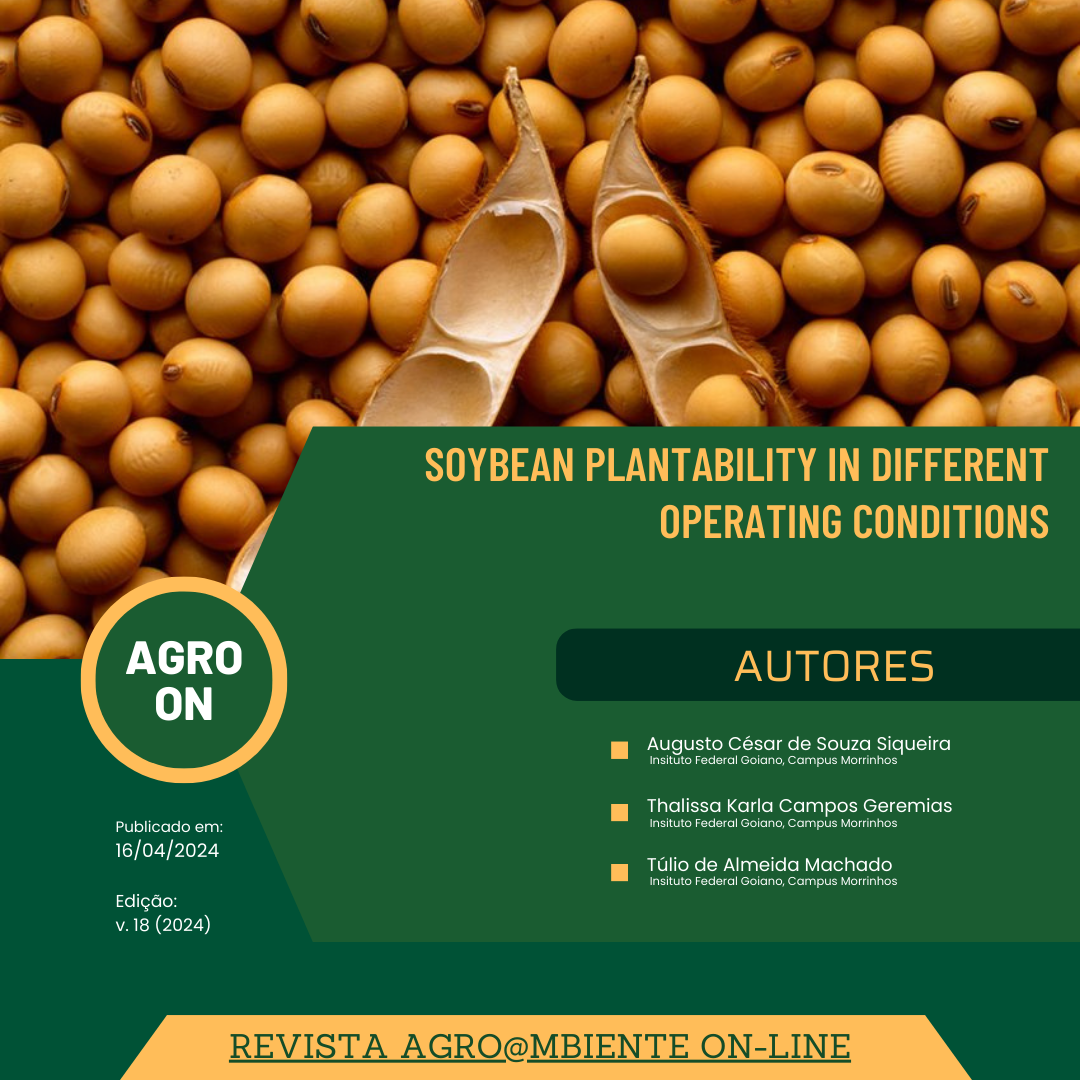Soybean plantability in different operating conditions
DOI:
https://doi.org/10.18227/1982-8470ragro.v18i00.7825Keywords:
Glycine max. Seed density. Seeding. Operational speed.Abstract
Many crops of global importance, such as soybeans (Glycine max), come from the sowing process. This stage in the production cycle is the most important since the deposition of the seed in the soil will directly impact final productivity. Therefore, it must be carried out correctly to guarantee a better uniformity of seed distribution. Thus, the objective was to evaluate the interference of operating speed and different furrow closing pressures on the longitudinal distribution of seeds, productivity, soil mobilization, and sowing depth in direct and conventional planting systems. The experimental treatment units had an area of 10 m² distributed in a randomized block design and arranged in a system of sub-subdivided plots, with four replications, being: two types of soil preparation (direct planting and conventional system), and, in each one, two operating speeds (3.42 and 6.82 km h-1) and three pressures in the furrow closing system (12.57; 14.94 and 16.52 kfg). The type of soil preparation system influenced the depth and spacing between seeds. The operating speed of 3.42 km h-1 determined the better longitudinal distribution of the seeds. Soil mobilization and blistering were significantly changed with increasing pressure from the compacting wheels, having the most significant effect at a pressure of 16.52 kgf.

Downloads
Published
Issue
Section
License
Copyright (c) 2024 AGRO@MBIENTE ON-LINE JOURNALRAGR

This work is licensed under a Creative Commons Attribution-NonCommercial-NoDerivatives 4.0 International License.
I declare on my behalf and on behalf of the other authors that I represent in the act of submitting this article, to REVISTA AGRO@MBIENTE ON-LINE that: • 1. The content of the article is the result of original data and not published or submitted to other journals . • 2. In addition to the lead author, all co-authors participated sufficiently in the work to make public their respective responsibilities for the content. • 3. In case of acceptance of the article, the authors agree that the copyright referring to it will become the exclusive property of Revista Agro@mbiente On-line, any reproduction, total or partial, in any other part or means of dissemination is prohibited, printed or electronic, without the prior and necessary authorization being requested and, if obtained, acknowledgments must be made to the Revista Agro@mbiente On-line of the Centro de Ciências Agrárias/UFRR.


